Federal Budget 2022: The speech decoded
You heard what Jim Chalmers said but what did he really mean? We cut through the jargon to explain what the budget means for you.
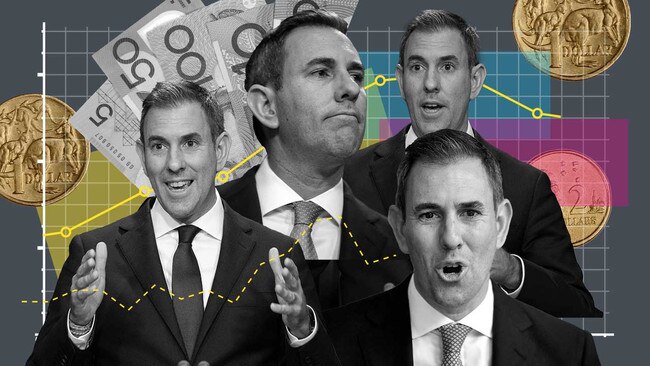
You’ve heard Jim Chalmers' speech, but what does it mean? Sid Maher breaks it down.
-
“We commit to a Voice for First Nations people … This is a responsible budget that is right for the times and readies us for the future. It delivers on the priorities for the Australian people, and it repays their faith in a new government.”
Sid says:
This early budget, coming less than six months after the May election, was always about redirecting spending towards Labor priorities, heaping as much political blame for existing economic problems on the Morrison government and painting the Albanese administration as a responsible economic manager with an eye to the future.
Chalmers opens with a commitment to the Voice – echoing the opening of the Prime Minister’s victory speech on election night – and then moves quickly to the problems confronting the budget: pandemic hangovers, natural disasters, “global uncertainty’’ (read war in Ukraine) and “painful price rises’’. He praises the Australian character as “resolute and resilient in hard times’’ and”optimistic and confident in a better future’’.
-
“We now confront the prospect of a third global downturn in a decade and a half. This time, not a financial crisis or a pandemic, but a war driving high prices and higher interest rates here and around the world, and the risk of another global recession.”
Sid says:
Like Kevin Rudd, Chalmers is from Queensland and he’s here to help. He argues “this time (read crisis) demands a different response’’, with a premium on “what’s responsible, affordable and sustainable’’.
He introduces Labor’s key election promises which are being funded in this budget. Cheaper childcare, more paid parental leave, cheaper medicines, a boost to aged care, fee-free TAFE, more university places, cheaper and cleaner energy, and more affordable housing.
Traditional Labor tropes around education, social housing, and healthcare and childcare are now economic imperatives designed to buttress the nation from an international tempest. But there is not much here for middle Australians without young children. There is no mention of small business here or tradies.
-
“While we intend to avoid the worst of the turbulence from overseas, we cannot escape it completely. Global challenges, along with high inflation and higher interest rates, will have an impact …”
Sid says:
As he has since taking the Treasury portfolio, Chalmers is at pains to politically inoculate the government from an impending slowdown, warning that the economic outlook is one of “great challenge and change’’.
The global economy “teeters’’, inflation persists, world economies are slowing, Chalmers says, as he softens voters up for news of a slowdown in Australia.
There’s no way to sugar coat it: Growth will fall from 3.5 per cent this year to 1.5 per cent in 2023-24. Unemployment will go up by a percentage point to 4.5 per cent. Inflation will hit 7.75 per cent later this year, and fall to 3.5 per cent through 2023-24.
On the bright side, wages are growing faster than they were before the election. The only catch is electricity and grocery prices are rising faster. Chalmers strikes an optimistic note. Real wages may grow in 2024.
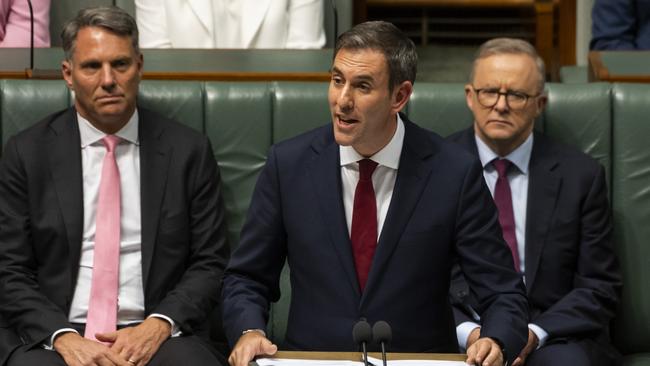
-
“From July next year, early childhood education and care will be more affordable for more than 1.2 million eligible Australian families who will benefit from higher subsidies.”
Sid says:
This was a key election promise and Chalmers says it is a “game-changing investment in families, our workforce and our economy’’. But the fine print shows it doesn’t start until July next year when inflation is forecast to have moderated.
A key goal of this speech is to position the government as one that keeps its promises. But Chalmers argues there is an economic dividend. He says it will increase the paid hours worked by women with young children by up to 1.4 million hours a week in its first year, the equivalent of an extra 37,000 full-time workers. Same goes for the paid parental leave scheme, which will be scaled up to an eventual 26 weeks. Chalmers argues both schemes go beyond taking pressure off household budgets. “This is about greater equality and greater security for Australian women – and more dads doing their bit.’’
-
“Our economy wasn’t delivering … Too much of our potential has been wasted and the costs of that are clear – with falling real wages, flatlining productivity, widespread skills shortages and too many Australians denied … a better future.”
Sid says:
Chalmers outlines the priorities for the Labor government, citing the Jobs and Skills Summit. Full employment, productivity growth and equal opportunities for women are core objectives. He moves on to the government’s TAFE and university places pledge to boost training for apprentices through as many as a million free courses.
The contrast with Josh Frydenberg’s budgets is clear. There is no mention of small business in the resilient economy part of the speech.
The emphasis is on training, schools and more qualified teachers.
“No Australian should be denied – by poverty, by postcode, or by lack of privilege – their chance at a better future.’’
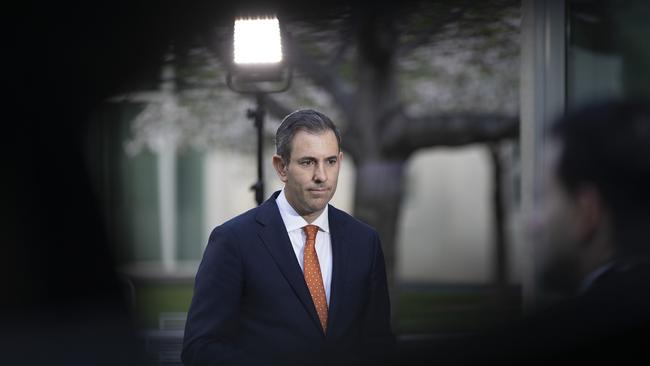
-
“Nothing speaks more to … a more modern economy like cleaner, cheaper, more reliable energy. After nearly 10 frustrating years … Australia now has a government that understands the generational and economic imperative of acting on climate change.”
Sid says:
Chalmers throws down the gauntlet on climate change. It’s full-speed ahead on emissions reductions after the Coalition’s decade of caution on the issue. There is a $20bn fund to wire the power network to cope with renewables and there are tax breaks to buy electric cars.
Chalmers envisages a national electric vehicle charging network and hydrogen refuelling stations on the nation’s highways, providing solar battery storage for 100,000 homes and giving renters access to solar power.
However, he offers no short-term fix for the current spiralling electricity prices, which present one of the sharpest cost-of-living imposts on households. Nor is there any mention of high gas prices.
-
“We have just struck a new national housing accord between governments, investors and industry to build the affordable homes our country desperately needs.”
Sid says:
Chalmers says the aspiration is to build one million new well-located houses over five years. The budget will kick in an extra $350m to build 10,000 affordable homes on top of existing commitments. State and territory governments will also build 10,000 homes. The scheme comes complete with high energy ratings and apprentice training targets. Chalmers has roped in institutional investors, including super funds, as potential investors. The accord comes on top of a string of affordable housing initiatives for low-income earners including the Housing Australia Future Fund to build 30,000 social and affordable houses in five years.
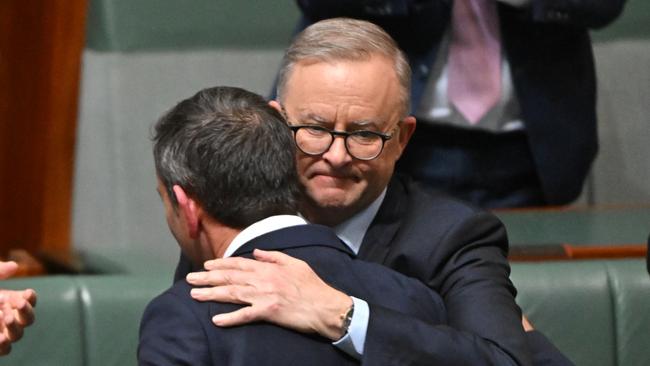
-
“A better future for Australia must mean a future made in Australia. No more sleepwalking while other advanced economies seize new opportunities. No more surrendering industries and jobs overseas. No more selling out our future by clinging to the past.”
Sid says:
Chalmers says he wants Australia to be a country that “makes things again’’.
He embraces the new economy as a “new opportunity’’ and cites “clean’’ manufacturing, new technologies and medical manufacturing.
He outlines Labor’s $15bn National Reconstruction Fund to finance projects “that expand our industrial base, diversity our economy’’ and create sustainable well-paid jobs. Through this fund it appears the government intends to get involved in the new frontier and not leave it to the market.
Chalmers is banking on the energy transition driving the future of manufacturing.
Again there is no mention in the speech of how high gas prices are squeezing many existing manufacturing operators as the war in Ukraine creates international supply shortages.
-
“This budget focuses on what we need, protecting what’s precious to us, and backing the people, sectors and communities strengthening our economy.”
Sid says:
Chalmers champions an investment pipeline of more than $120bn in transport infrastructure over the next decade.
There has been a massive reprioritising of federal government focus on infrastructure. The political argument here is the Nationals’ spending was “wasteful and unnecessary’’.
Full-fibre is back in fashion for the NBN with a plan to help 1.5 million homes and businesses. The loss of the instant asset write-off scheme is not mentioned in the speech, however small business does get new energy efficiency grants, and tailored mental health and financial counselling programs.
There is also money to speed visa processing to get more migrants into the country to address skills shortages, and a boost to biosecurity to help farmers.
-
“While our economic policies put a premium on resilience, our fiscal strategy puts a premium on restraint. This is important – to keep spending under control, to give ourselves a better buffer for any further downturns.”
Sid says:
With no surplus in sight, Chalmers is at pains to talk down his spending and present the government as a responsible economic manager. The budget papers show spending will grow from $650.9bn to $666.5bn in the next two years, but Chalmers says new policies have been largely offset to avoid adding to inflation. He adds 99 per cent of the extra tax being taken by the government is being returned to the budget over the next two years. But then comes the punchline. The deficit for 2022-23 will be $36.9bn – an improvement of $41.1bn on the result forecast in May.
Chalmers reveals about $22bn in savings have come from slashing Coalition grants programs, which he labels “wasteful or unnecessary” and redirects them towards “higher quality investments’’.
As he says, it’s all a matter of priorities.
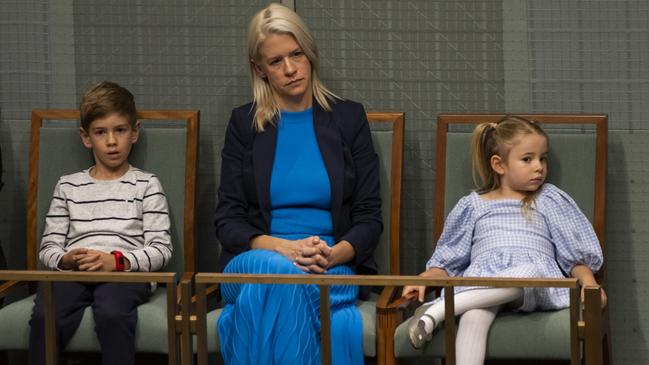
-
“These priorities speak to who we are as a country, how we care for each other and protect each other. We choose to pay for better hospitals and healthcare.”
Sid says:
Chalmers makes a pitch directly to old-fashioned Labor values and dresses them up as good economic management.
The party that brought Australia Medicare is back in office and chooses to increase funding to hospitals and aged care, better pay in these sectors and promises to improve the NDIS. Chalmers is unapologetically delivering to a core Labor constituency, given health and education are seen as Labor electoral strengths.
He expands his pitch to lifting defence spending above 2 per cent of GDP and rounds it out with a nod to funding a federal anti-corruption body, ending violence against women and children, investing in Indigenous Closing the Gap measures and responding to the veterans royal commission. The message is: Labor is delivering its election promises and funding “what matters’’.
-
“This budget does more than end a wasted decade … marked by energy chaos, a crisis in aged care, skills shortages, stagnant wages and not enough to show for a trillion dollars in debt.”
Sid says:
As he wraps up, Chalmers delivers one more political kick to the Morrison government. He paints himself as the man with the plan after a wasted decade. Labor, he says, will confront challenges “ignored for too long’’. He appeals to Australians’ better angels, arguing that getting through this period will require resilience, pragmatism, co-operation and confidence. As his speech ends, so too does Labor’s honeymoon. The government, for good or ill, will be judged on this budget. When Chalmers delivers his next budget speech, the nation’s economic problems will be his political burden.

To join the conversation, please log in. Don't have an account? Register
Join the conversation, you are commenting as Logout